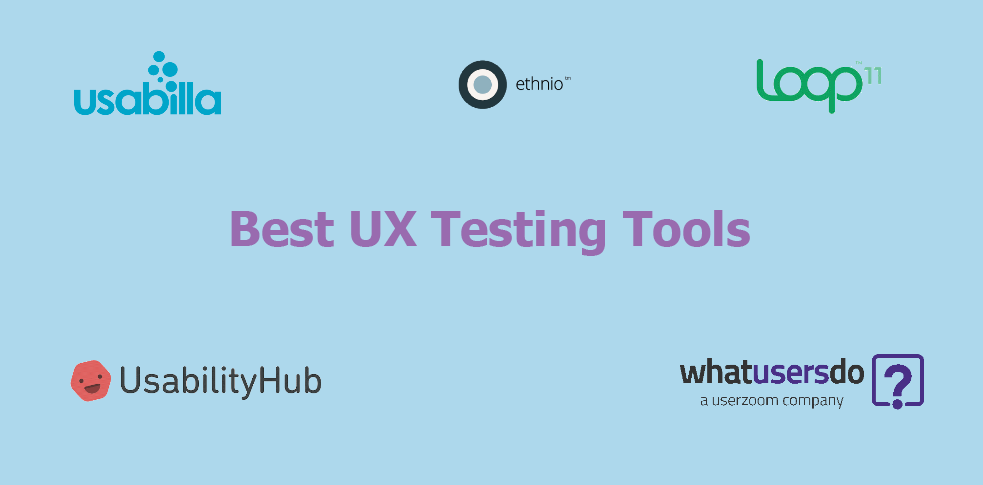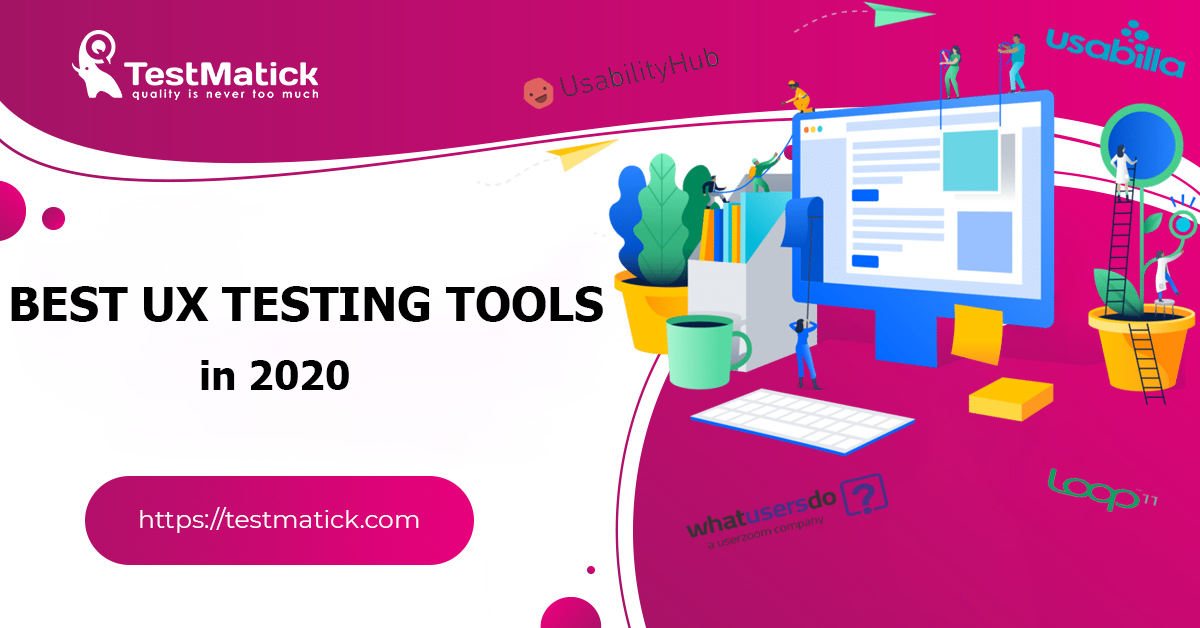Let’s analyze the concepts of usability and user behavior.
First, they are very important factors to create and develop a website, that help to increase software popularity on the basis of suggestions from competitors.
Second, it’s usability that helps every web user choose the most user-friendly software.
The faster is the development of new websites and related software, the faster the number of useful tools that can help website owners make their web platforms as useful for multiple usage as possible increases.
Taking the variety of requirements into account, it’s very hard to define certain tools that really meet user requirements (since the number of such requirements increases when new web functionality has been released.)
We’ll talk further about a list of useful tools that can be used for qualitative UX testing in 2020.
By the way, some of them are paid products, and some of them have free versions with limited functionality.

Best UX Testing Tools
Ethnio
URL: https://ethn.io/
A popular tool to select a necessary group of members for performing certain user actions (tests), that uses graphical interface of a required website and performs certain analytical tests (manually or automatically).
This resource has the functions to interrupt user presence on a certain website, to ask them questions at a certain stage of website usage and offer them feedback forms, for recording their personal impressions.
Ethnio is, in some way, a multifunctional virtual questionnaire that can be installed on a website in a form of a small pop-up.
Users can receive discounts, certificates and bonus offers for their personal participation in certain polls.
When a system defines the feedback form of a user who takes part in a poll as completed, Ethnio system shows if there is possibility to perform usability testing with this user.
We can also mention that this software can be integrated with other web testing tools (for example, there is complete integration with Usabilla product).
How to use: the product is paid, with a trial 14-day version.
Link to the price: https://ethn.io/pricing
WhatUsersDo
A specialized platform, used for performing complete testing, that helps to study user behavior on web resources, using the videos of their work and gathering the comments on usability. Taking such data into account, a person can easily find what works well on a website and what should be improved.
This online platform helps to analyze various resources, mockups and applications.
The group of engaged testers contains users from various fields (manual testers, automated testers, regression testing specialists, and others.)
Depending on the set tasks, we can set various targets for testing.
With the help of received audio and video files, we can analyze behavioral factors of users while their using the web product that is being tested.
It’s a versatile online platform that can be used for proper analyzing the efficiency of web resource functioning according to the latest requirements to digital products in 2020.
How to use: paid software with a free 7-day period.
Link to the price: https://www.whatusersdo.com/clients/pricing
Link to a free trial period: https://try.whatusersdo.com/free-trial/
Loop11
It’s a very simple thematic tool for usability testing, that doesn’t require knowledge of HTML/CSS or certain development languages and skills from a user.
Software functionality provides a wide range of task types, there is possibility to configure automated tasks and provide correct answers to them.
Software entails several variations at once, for engaging test members in checking certain software functionality.
You can create personal list of users on the basis of selection from popular social networks, create pop-ups on a website, to attract users who are interested in doing this.
Loop11 tools can generate test assignments, automatically send them to users and then rapidly gather static blocks of information (statistics of visiting certain web pages, activity metrics, information on hot spots on a web page, working with benchmarks).
There is also the functionality to record audio and video of a testing process.
How to use: paid version and free 14-day version (starting from the moment of registration).
Link to the price: https://www.loop11.com/pricing/
Usabilla
A quite popular tool for usability testing of websites and other applications. It helps to assess usability of interaction with websites, by publishing user reviews and giving points. You can also put notes on the created screen captures, if needed.
Usabilla helps to create thematic groups of users, that will give real data on what is good and useful functionality and what should be improved and reconfigured.
A key feature of this system is technical possibility to test interface of a website before completing software code development. You can check any web page or a created screen capture.
Users can put colored markers on web pages, defining the weakest spots while executing this task.
You can also use marks for showing “clicks”, or visually show what spots have been clicked and thereby tested. Also, there is the option to create “one click” tasks and hence, personally establish feedback on a web page.
How to use: paid version and trial version by request.
Link to the current price: https://usabilla.com/pricing-policy/
UsabilityHub
URL: https://usabilityhub.com/
Quite a popular tool for usability testing web resources, that offers various useful and up-to-date functionalities.
UsabilityHub shows a total interaction of users with the platform and also, what they memorize and on what information spots they are making errors.
This tool can be used before the website has been released, to find weak spots and completely fix existing errors at the earliest stages of web product development.
The overall available functionality of UsabilityHub portal allows simple testing navigation panel, summing up a total number of clicks on different spots of a web page, build an error with the gradually set screen captures that are created by the users who are engaged in testing.
There is the function of design testing that offers several alternative images at once.
There are settings of creating personalized feedback forms and analytics of easiness of user orientation on a website.
We should also mention the built-in FiveSecondTest tool by UsabilityHub, which offers the possibility to perform usability testing of web products.
The test is based on several screen captures, from which a user can define the best one, according to his/her view. The system shows a user a screen capture and asks: “What have you memorized from what you have seen?”
This platform has also special “cloud words” – a list of words that are automatically formed from the questions that were put to users. Such functionality allows rapid defining the tendencies and completely fast analyzing the received results.
How to use: paid account and free registration with several functional limitations.
The link to the current price: https://usabilityhub.com/pricing
Conclusion
To understand the level of easiness of user interaction with a web resource, you should ask users about this.The above-mentioned list will be very useful while selecting the tools for performing web usability testing and simplifying the process of interacting with it.
All analyzed services help to define how much software meets the user expectations and also, greatly save the time and money of website owners for performing up-to-date tests.
This list is obviously not universal and complete, the testing tools are constantly being created and improved but the main features of usability of described tools (complete simplicity and accessibility ) will be a real advantage for using them on a daily basis.










Leave A Comment